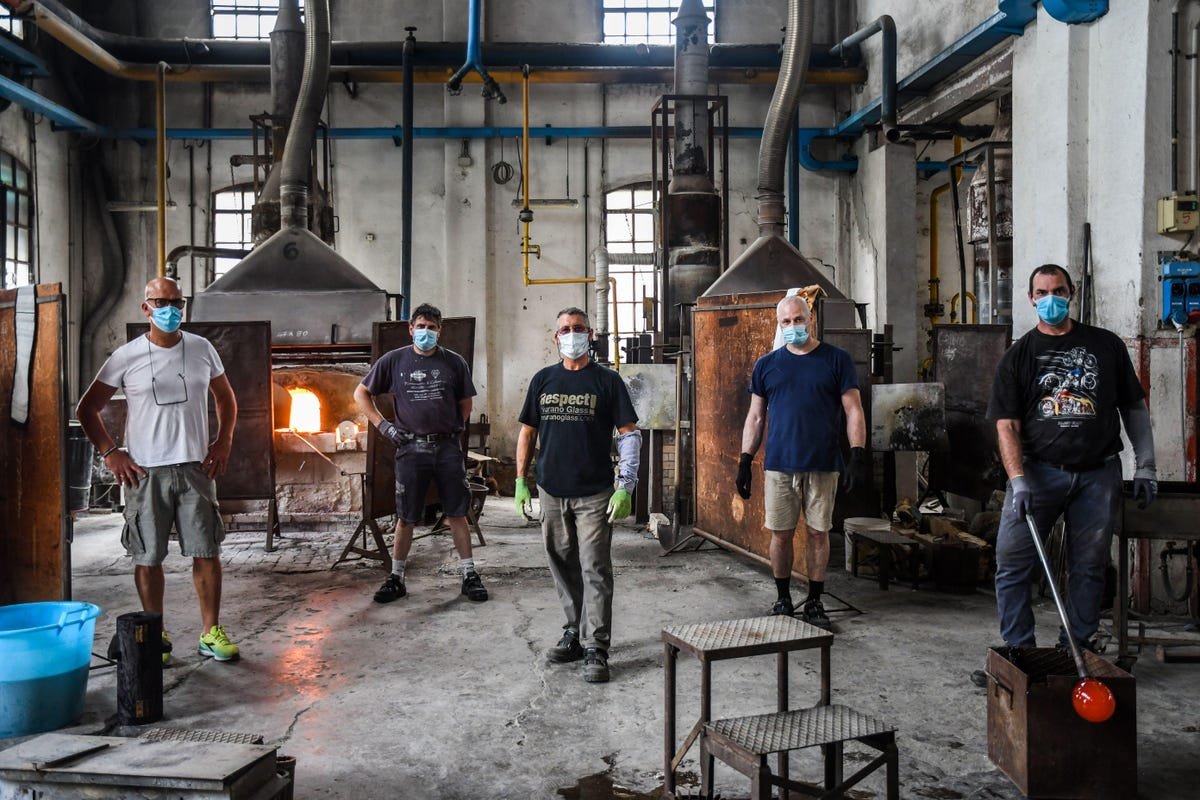Murano, The Glass Island
Most first-time visitors to Venice spend the majority of their time around its (rightfully) famous Saint Mark’s Square. Those with a bit more time in Italy also fit in a visit to Murano, a nearby island.
Or perhaps I should be more precise and say islands. Murano is actually a collection of 7 individual islands, all linked together by bridges.
This is the place to go if you’re interested in the famed Murano glass, where you can watch a glass making demonstration and maybe buy a Venetian glass souvenir or two.
The name of island of Murano came from “ Ammurianum”, named by first people that they have lived there; which they were got away from the city of Altino and Oderzo to find shelter during barbarian invasions. This particular name should come from “ Porta Orione” in the city of Altina because, people who got away, wanted to pay a tribute. However, this version is not confirmed by historic date and sometime could be mixed with folktales and real facts.
Until tenth century, the island of Murano was famous for its important trade , city-port and for its economic wellness supported by salt flats, watermills and fishing. The city was autonomous until 1171, them took part of Santa Croce district.
Since 1275 the island could make laws for themselves, guaranteed by a “ Maggior Consiglio” created by about five hundred of Murano nobles, also could make their currency, called “ Osella”.
The autonomy of Murano was confirmed under Napoleon, when it was recognized as an independent city hall. In 1923 the institution became part of Venice’s city hall.
WORKING MURANO GLASS
Glass is formed from silica, which became liquid at hight temperature; is in the moment of passage between liquid state and solid state which the glass becomes soft and malleable,allowing the glassworkers to create unique and inimitable works.
the experience gained over time has brought the glassmakers of Murano to discover that the usage of different materials during the processing make possible for the glass to change its appearance, creating unique and beautiful visual effects. for example sodium is used to produce glass mat, or nitrate and arsenic, are used to remove bubbles. colour and technic change depending on the results that the glassmakers are looking for.
the works of Murano glass is often divided in two different classes: Primary processing and Second processing.
Make part of first process all those process which use raw material, like sand, soda and other compounds, or the raw glass called “cotisso”. these elements are melted in special furnace in order to obtain the vitreous mixture which is subsequently worked.
In the second process, make part the elaboration a lume with the use of glass rods , the glass melting and cold ” processes ” such as the decoration , engraving and grinding .
PRIMARY PROCESSING
Avventurina
The term “ avventurina” describes a glass invented in Murano around 1620 which is formed from tiny crystal of copper wrapped in a glass mass. The secret of “ avventurina” working, held in the centuries by a few glassmakers, is to add a completed fusion specific quantity of raw material such as iron typing, silicon metal and coal, up to the precipitation of copper. The homogeneity of distribution of crystal’s copper characterize “avventurina”’s quality.
The origin of the term “avventurina” takes its name from a definition given, in the seventeenth century, by glassmaker John Darduin: “la si dimanda venturina, et con ragione, perché sortisse più per ventura che per scientia”.
Crystal
It is called crystal the colourless and transparent glass, decolourized with manganese dioxide, obtained with purified raw materials. Since the Middle Ages the crystal is considered the finest Murano glass. The secret of its quality lies in the purify of raw materials used, use of bleaching, preparation of mixture and conduct of fusion. In the mid-fifteenth century, Murano proposed a pure and colourless glass, that for the fist time in history it was called “crystal” and was subsequently reproduced in other european countries. The sodium crystal is very suitable for the production of very light blown-glass objects that require long working times.
Filigree
It is a glass obtained with a hot decorative technique, which involves use of chopsticks containing smooth wires in “ lattimo” or coloured glass.
Lattimo
“Lattimo” is a matt white glass such as milk, the invention is dated in 1450 in Murano in order to imitate chinese porcelain arrived in Venice. Higher is the concentration of zinc oxide in the mixture, higher will result homogeneity of crystals.
Similar to “ lattimo”, from an aesthetic point of view, is “ vetro smaltato” with lead arsenate especially used in the working of pearls and “ filigree”.
Soffiatura
In the middle of fist century b.c. was a technique that revolutionized glass production, making rapid and accessible the production of glass bowl helping the spread even at most modest classes. The origin of “ soffiatura” occurred in syrian-palestinian area. At the beginning there was not a real blowpipe but a hollow pipe that it was closed at one end allowing the modelling in that zone in the form of small bottle, while in the other end was done the blowing generated by master glassmaker.
In a second time the modelled object was removed from the rest of glass pipe.
The introduction of a metal pipe made easier the work of glassmaker and increased the range of procuts.
Sommerso
The “ sommerso” is a type of glass art of Murano which presents layers with contrasting colours. The technique consists in immersion of “ soffiato” with a large thickness into melting pot containing transparent glass or other colours with the same thickness. The overlap of thick layers of transparent glass allows to obtain special chromatic effects. This process is a popular technique for vases and it is sometimes used for the sculptures.
To visit the factory on Murano, you will meet your local guide in the center of Venice and with a short 15-minute walk through the hidden streets and picturesque corners you will reach Murano island on a public boat (ticket is not included). You will discover Murano which is a group of seven islands connected by bridges, and visit the designed glass factory.During the visit to the glass factory, you will see a glass master performing with the glass blowing technique and the sculpture technique and learn about this ancient art. A guide will provide uswfull infoContinue your experience with a workshop where you will create your own handmade object in Murano glass. You can either create jewelry, choosing the glass beads as you make a bracelet or pair of earrings, or take part in a mosaic workshop where you can create an ornament with many multicolor glass elements.At the end of the workshop, you will have time to visit the glass factory shop and enjoy a 20% discount.Tour end at glass factory and can go back at any time






